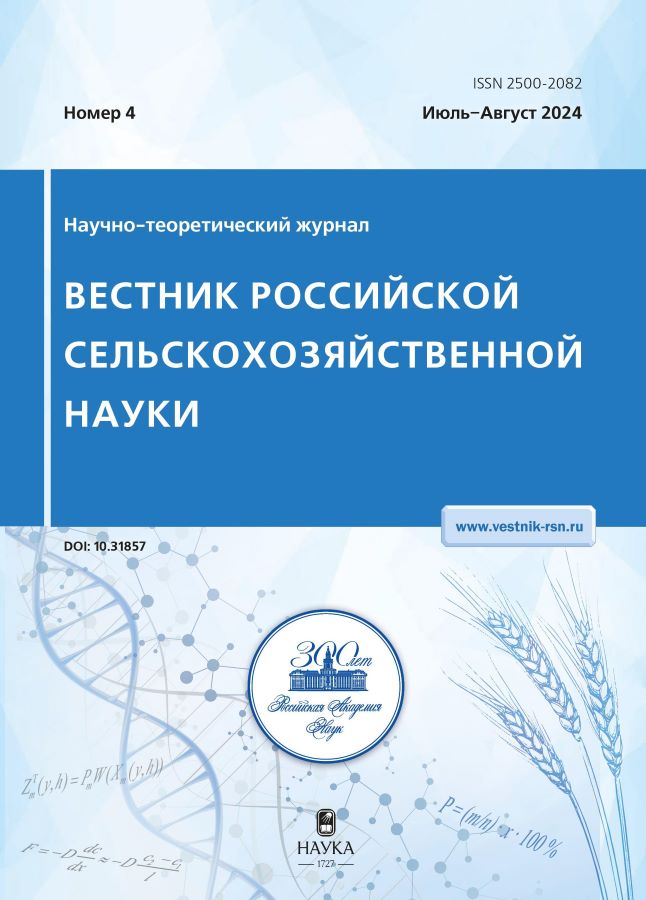Response of actinidia deliciosa plants to abiotic stress in the Russian subtropical zone
- Authors: Abilfazova Y.S.1
-
Affiliations:
- Federal Research Centre the Subtropical Scientific Centre of the Russian Academy of Sciences
- Issue: No 4 (2024)
- Pages: 55-58
- Section: Crop Production and Selection
- URL: https://vietnamjournal.ru/2500-2082/article/view/659268
- DOI: https://doi.org/10.31857/S2500208224040095
- EDN: https://elibrary.ru/xkzdcf
- ID: 659268
Cite item
Abstract
The article presents a general description of the culture of Actinidia deliciosa, grown in the humid subtropics of Russia. The work was carried out since 2017 at the site of the Adler experimental station of the branch of the Federal Research Center of the N.I. Vavilov All-Russian Institute of Plant Genetic Resources and in the laboratory of plant physiology and biochemistry of the Subtropical Scientific Center of the Russian Academy of Sciences, Sochi. Physiological and biochemical indicators were determined that reflect the resistance of actinidia plants planted in 1988 to environmental stress factors to identify the most adapted varieties to the conditions of the humid subtropics of the Krasnodar Territory. The soil is alluvial meadow with low humus. The varieties studied were late ripening Hayward; Ellison, Abbott and Bruno – early; Monty – medium; Tomuri (pollinator of kiwi female varieties). The indicator organ is physiologically mature actinidia leaves, which were selected from May to September against the backdrop of a natural increase in air temperature. Water deficit was in 2022–2023 is 29.62–36.46%, the minimum is for the Ellison and Monty varieties (29.62–30.21), the maximum is Abbott (36.46%). The dry matter content is 25.47–35.53%, the water content of leaf blades is 46.09-62.66%. The Monti, Hayward and Tomuri varieties are the most resistant to the weather and climatic conditions of the Russian subtropical zone.
Full Text
About the authors
Yu. S. Abilfazova
Federal Research Centre the Subtropical Scientific Centre of the Russian Academy of Sciences
Author for correspondence.
Email: Citrus_Sochi@mail.ru
PhD in Biological Sciences
Russian Federation, SochiReferences
- Abil'fazova Yu.S., Besedina T.D., Tutberidze C.V. Biohimicheskij sostav plodov A. deliciosa vo vlazhnyh subtropikah Rossii // Sadovodstvo i vinogradarstvo. 2023. № 5. S. 42–48. https://doi.org/10.31676/0235-2591-2023-5-42-48.
- Ajba L.Ya. Kivi novaya perspektivnaya subtropicheskaya kul'- tura Chernomorskogo poberezh'ya Kavkaza, M.: 2005. 136 s.
- Besedina T.D., Tutberidze C.V., Bojko A.P., Toriya G.B. Vliyanie rezhimov kapel'nogo orosheniya na svojstva pochv pod nasazhdeniyami Actinidia deliciosa // Novye tekhnologii. 2018. № 3. S. 159–165.
- Besedina T.D., Tutberidze C.V., Kiseleva N.S. O vliyanii agroekologicheskih uslovij vlazhnyh subtropikov Rossii na produkcionnyj potencial Actinidia deliciosa (Kiwifruit) // Sel'skohozyajstvennaya biologiya. 2021. № 56(5). S. 999–1010.
- Besedina T.D., Tutberidze C.V., Toriya G.B. Vodnyj rezhim vlazhnyh subtropikov Rossii i oroshenie aktinidii delikatesnoj (Actinidia deliciosa (A. Chev.) Lang Et. Forg.) Cubtropicheskoe i dekorativnoe sadovodstvo: sb.nauch. trud. FGBNU VNIICiSK, 2018. № 66. S. 135–144. Diti ons of Russian humid subtropics. Fruit Growing. 2019. № 31(1). S. 150–156.
- Besedina T.D., Tutberidze C.V., Bojko A.P. Agroekologicheskij pasport A.deliciosa (kivi) – osnova optimal’nogo razmeshcheniya vo vlazhnyh subtropikah Rossii. Vestnik rossijskoj sel’skohozyajstvennoj nauki // 2016. № 2. S. 30–34. ISSN 2500-2082.
- Ryndin A.V., Belous O.G., Malyarovskaya V.I. i dr. Ispol’zovanie fiziologo-biohimicheskih metodov dlya vyyavleniya mekhanizmov adaptacii subtropicheskih, yuzhnyh plodovyh i dekorativnyh kul’tur v usloviyah subtropikov Rossii // Sel’skohozyajstvennaya biologiya. 2014. № 3. S. 40–48.
- Tarasenko V.S. Vozdelyvanie kivi v Rossii / Pod red. d-ra biol. nauk M.N. Plekhanovoj. SPb: VIR,1999, 44 s.
- Yakushev V.P., Zhukovskij E.E. Klimaticheskie izmeneniya i risk v zemledelii // Vestnik RASKHN. 2010. № 2. S. 13–16.
Supplementary files












